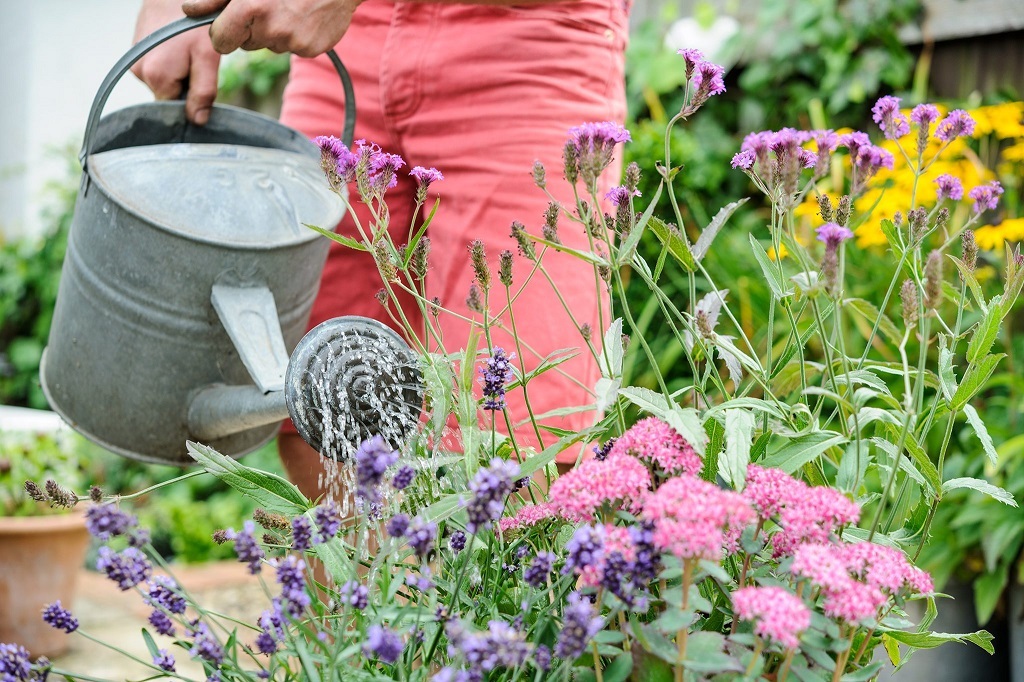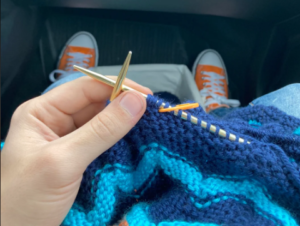
Does the sight of a vibrant flower garden fill you with joy? If you dream of transforming your bland yard into a colorful haven for pollinators and yourself, then this guide is for you! Creating a flower garden from scratch might seem daunting, but with careful planning and a little elbow grease, you can cultivate a breathtaking outdoor space.
This article equips you with the knowledge and steps to turn your yard into a flourishing flower garden, even if you’re a gardening novice.
Planning Your Floral Paradise
Before diving in with a shovel in hand, take some time to plan your masterpiece. Here are some key aspects to consider:
- Sun Exposure: Different flowers have varying sunlight needs. Observe your yard throughout the day to identify areas with full sun (6+ hours of direct sunlight), partial sun (4-6 hours), or shade. This will guide your plant selection later.
- Soil Conditions: Understanding your existing soil is crucial. Conduct a simple soil test, readily available at most garden centers. This will reveal the soil’s nutrient content, pH level, and drainage properties, all factors influencing plant selection and potential amendments needed.
- Design and Layout: Sketch a layout of your garden. Consider incorporating elements like pathways, seating areas, or focal points to add visual interest and functionality. Think about color schemes, flower heights, and flowering times to create a visually appealing and dynamic display throughout the season.
Preparing Your Garden Bed
Once you have a plan, it’s time to prep your chosen area:
- Define the Borders: Use edging materials like stone, brick, or flexible edging strips to define the borders of your flower bed. This creates a clean look and helps prevent unwanted grass or weeds from creeping in.
- Clear the Ground: Remove any existing sod, weeds, or debris from the designated area. You can use a shovel, sod cutter, or herbicide (as a last resort) for this step.
- Assess Soil Quality: Based on your soil test results, you might need to amend the soil. For poor drainage, consider adding sand or compost. If the soil lacks nutrients, incorporate aged manure, compost, or organic fertilizer to enrich it. Aim for a loose, well-draining soil texture.
Choosing the Right Flowers
With a prepped bed and a plan in mind, comes the exciting part: selecting your floral stars! Here are some factors to consider:
- Sun Exposure: Match your plant choices to the sun availability in your garden. Opt for sun-loving varieties like sunflowers, zinnias, or marigolds for full sun areas. Shade-tolerant options like begonias, impatiens, or hostas thrive in less sunlight.
- Bloom Time: Stagger your plant selection to ensure continuous blooms throughout the season. Choose a mix of early, mid-season, and late bloomers to create a vibrant display from spring to fall.
- Plant Height and Color: Consider the mature heights of your chosen flowers when creating your layout. Taller varieties can act as backdrops, while shorter ones add color and texture in the foreground. Play with color combinations to create a harmonious or contrasting effect.
Planting Your Flowers
With your chosen plants in hand, it’s time to bring your design to life:
- Read Plant Labels: Each plant variety has specific spacing requirements. Carefully read the plant labels for recommended spacing to ensure proper growth and air circulation.
- Dig Planting Holes: Dig holes slightly larger than the root ball of each plant. Loosen the surrounding soil for better root establishment.
- Gently Position Plants: Carefully remove the plant from its container and gently place it in the prepared hole. Ensure the root crown (the area where the stem meets the roots) sits slightly above the soil level.
- Backfill and Water: Fill the hole with amended soil, gently firming it around the plant base. Water thoroughly to settle the soil and hydrate the roots.
Caring for Your Flower Garden
The work doesn’t stop after planting! To ensure your floral display thrives, proper ongoing care is essential:
- Watering: Water your plants regularly, especially during hot and dry periods. The frequency will depend on the weather, plant variety, and soil type. Aim to keep the soil consistently moist but not soggy.
- Weeding: Regularly remove weeds that compete with your flowers for water and nutrients. Hand-pulling weeds is an eco-friendly approach.
- Deadheading: Removing spent flowers encourages continuous blooming in many varieties. Simply pinch or snip off the wilted flower head just above a healthy set of leaves.
- Fertilizing: Depending on your soil quality and chosen plants, you might need to supplement with fertilizer throughout the growing season.
- Pest and Disease Management: Keep an eye out for common garden pests like aphids, slugs, or powdery mildew. Address them promptly using organic methods whenever possible, like insecticidal soap or neem oil sprays.
- Winterizing (if applicable): For perennial flower varieties that survive winter in your climate, apply a layer of mulch around the base of the plants to protect their roots from freezing temperatures. Tender annuals will need to be brought indoors or composted before the first frost.

Beyond the Blooms: Adding Beauty and Functionality
Your flower garden can be more than just a visual feast. Here are some ways to enhance its functionality and enjoyment:
- Companion Planting: Attract beneficial insects like ladybugs and butterflies by incorporating companion plants that provide them with food or habitat. This can help control pests naturally.
- Incorporate Pollinators: Choose flowers rich in nectar and pollen to attract butterflies, bees, and hummingbirds, creating a vibrant ecosystem in your garden.
- Create Seating Areas: Integrate benches, chairs, or a small patio within your flower garden to create a peaceful haven for relaxation and enjoying the beauty of your blooming oasis.
- Add Lighting: String lights or solar-powered path lights can add a magical touch to your flower garden in the evenings, extending your enjoyment beyond daylight hours.
Related: How to Make Balcony Garden: Unlock Your Green Thumb Today!
Conclusion
Transforming your yard into a flower garden is an exciting and rewarding journey. By following these steps, planning meticulously, and providing proper care for your chosen plants, you can cultivate a vibrant and flourishing floral paradise. Remember, gardening is a learning experience. Don’t be afraid to experiment with different varieties, adjust your approach based on your specific conditions, and embrace the joy of watching your floral masterpiece come to life!






